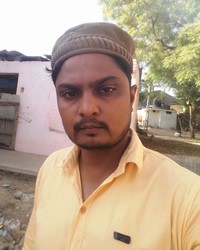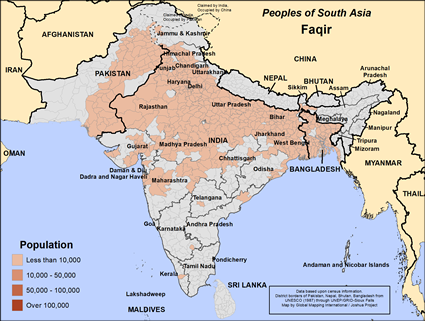The Faqir (or Fakir) of India are beggars by tradition. Fakir comes from the Arabic word meaning poverty.
In Uttar Pradesh, most of the Faqir are landowners and work in cultivation. Poultry work is a second occupation for them. Most of them are living in multi caste villages where there are many religions. Every subdivision has a caste council that judges local problems and matters. They are endogamous, which means they do not marry outside their group and have a caste association that covers India.
In Gujarat, the Faqir are endogamous, and marriages usually happen in their community. They favor parallel cousin marriages and cross cousin marriages. They traditionally beg and some work at Sufi shrines. Most now work as laborers.
In Maharashtra, the Faqir speak Urdu and Marathi. They beg but there is a slow change towards work such as selling baskets, crockery and craft items. Most are laborers, particularly in Nagpur. They have been given the Other Backward Classes position which means they have a part in education and work.
In West Bengal, the Faqir are also called Sahajia and were beggars. They are supposed to be called by that name as they were followers of Sher Ali Sahaji who is classed as a Sufi saint. Some cultivate jute and mustard seeds and produce cooking oil. A few are landless agricultural laborers. Some live in Muslim cemeteries.
They are Sunni Muslim by religion. They also hold folk beliefs.
They have a low literacy level so the gospel will have to be presented in oral form.
Pray that these low status Muslims will look to Jesus for acceptance.
Pray for the Lord to thrust out loving workers to the Faqir community in India.
Pray for the Holy Spirit to give Faqir elders a hunger and thirst for righteousness and be satisfied by the Lord.
Scripture Prayers for the Faqir in India.
www.peoplegroupsindia.com/profiles/fakir
en.wikipedia.org/wiki/faqir_(clan)
| Profile Source: Joshua Project |











